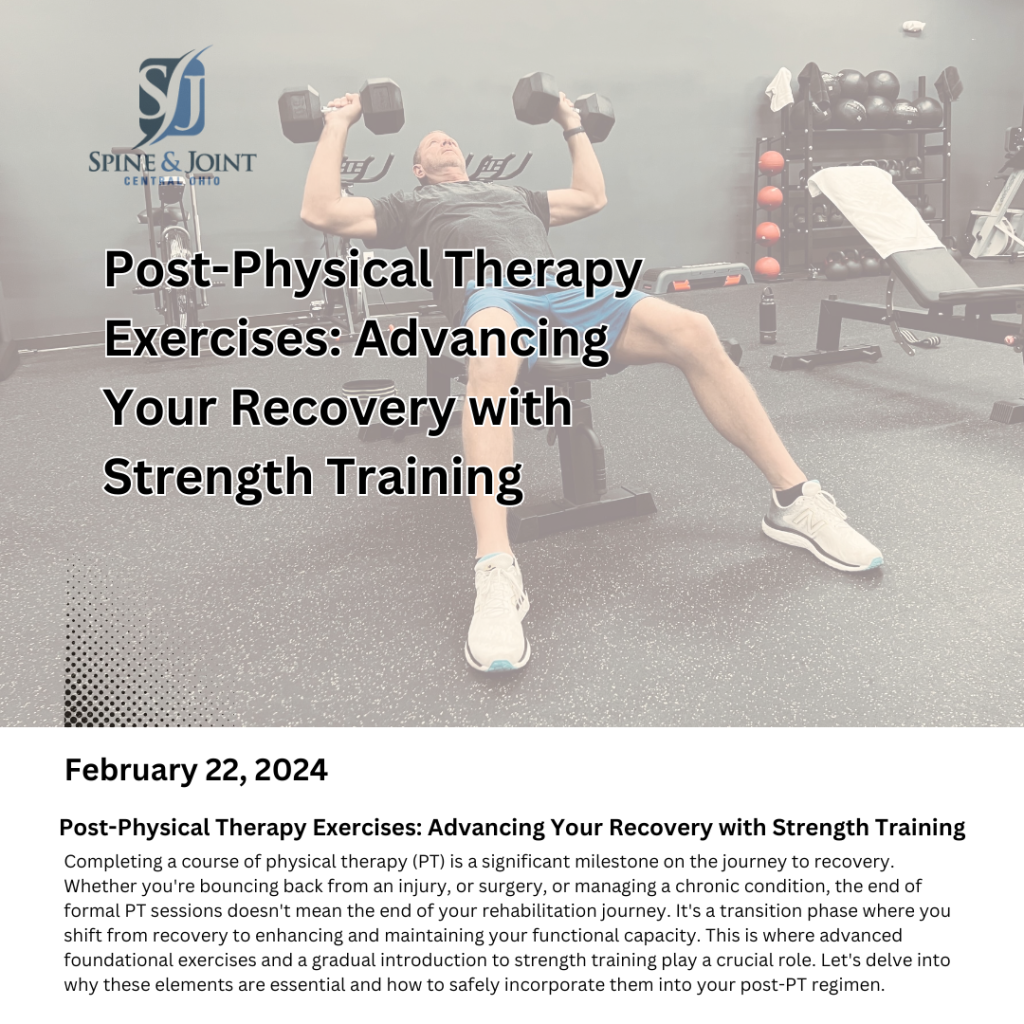Completing a course of physical therapy (PT) is a significant milestone on the journey to recovery. Whether you’re bouncing back from an injury, or surgery, or managing a chronic condition, the end of formal PT sessions doesn’t mean the end of your rehabilitation journey. It’s a transition phase where you shift from recovery to enhancing and maintaining your functional capacity. This is where advanced foundational exercises and a gradual introduction to strength training play a crucial role. Let’s delve into why these elements are essential and how to safely incorporate them into your post-PT regimen.
The Importance of Advanced Foundational Exercises
After PT, your body has likely regained a baseline level of function and mobility. However, to truly thrive and minimize the risk of re-injury, it’s crucial to build upon this foundation. Advanced foundational exercises are designed to do just that. They help improve your strength, flexibility, and balance beyond the basic level, preparing your body for the demands of daily activities and beyond.
1. Enhancing Proprioception: These exercises aim to improve your body’s ability to sense its position, movement, and action, which is vital for preventing falls and injuries.
2. Building Muscular Endurance: By increasing your muscles’ ability to perform over time, you’re not just getting stronger; you’re ensuring that your body can handle activities of longer duration.
3. Improving Functional Movement Patterns: Advanced exercises focus on the quality of movements, teaching your body to perform tasks most efficiently and safely.

Starting to Load Tissue
Loading tissue refers to the process of gradually increasing the amount of stress placed on your muscles, bones, and connective tissues. This is essential for building strength and resilience.
After PT, your body is in a prime state to start this process, but it must be done carefully to avoid overloading and potentially setting back your recovery.
Incremental Progression: Start with low loads and gradually increase the intensity and volume of your exercises. This could mean adding more weight, increasing repetitions, or incorporating more complex movements over time.
Listen to Your Body: Pay close attention to how your body responds to increased loads. Some discomfort is normal, but sharp pain or significant swelling is a sign to pull back.
Recommendations for Strength Training After PT
Integrating strength training into your post-PT routine is essential for building muscle mass, improving bone density, and enhancing overall physical function. Here are some recommendations to get started:
1. Consult with a Professional: Before diving into strength training, consult with a fitness professional or a physical therapist who can design a program tailored to your specific needs and goals.
2. Focus on Compound Movements: Exercises that work multiple muscle groups simultaneously (like squats, deadlifts, and push-ups) are highly effective for building strength efficiently.
3. Incorporate Bodyweight Exercises: Not ready for weights? Bodyweight exercises are a great way to build strength without additional equipment.
4. Prioritize Form Over Weight: Ensuring correct form is crucial to prevent injuries and maximize the effectiveness of each exercise.
5. Include Core Strengthening: A strong core is essential for stability and preventing back pain. Include exercises that target all areas of your core.
6. Progress Slowly: Gradually increase the intensity of your workouts to continue making gains without overtaxing your body.
7. Rest and Recover: Allow adequate recovery time between strength training sessions to let your body heal and grow stronger.
Conclusion
Transitioning from physical therapy to an independent exercise regimen is a critical phase in your recovery journey. By focusing on advanced foundational exercises and safely incorporating strength training, you can build upon the progress made during PT, enhancing your functional capacity and resilience. Remember, the key to success is a gradual progression and listening to your body’s cues. With patience and persistence, you can achieve lasting health and performance improvements.

Recent Comments